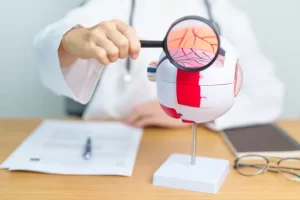
There are various alternatives for tightening sagging skin, including self-care, noninvasive, and minimally invasive procedures. Some people may contemplate surgery if their skin sagging is extreme. Sagging skin isn’t dangerous, but it might make a person feel less confident. Sagging skin can develop as people age or as a result of weight reduction. Certain lifestyle factors might also cause the skin to age prematurely and saggy. These include eating a poor diet and getting too much sun.
Sagging skin is a regular aspect of the aging process. Skin elasticity is linked to two essential proteins: collagen and elastin. As individuals become older, their ability to produce these two proteins declines along with hyaluronic acid. Hyaluronic acid is a chemical that aids in the retention of moisture and the appearance of fuller skin. Between the ages of 35 and 40, most people’s skin begins to lose firmness.
What Causes Saggy Skin?
The elements that give skin its young structure and appearance, collagen and elastin, decrease production as you get older, resulting in sagging skin. Weight loss is one of the main culprits for sagging skin. The skin of the abdomen also extends during pregnancy. After giving delivery, this might cause skin sagging. High levels of sun exposure, particularly UV rays, can cause wrinkles and droopy skin. This is due to the skin’s suppleness being reduced by harmful UV radiation.
- Sudden weight loss
- Pregnancy
- Aging
- Stress
Sagging Skin Treatment: How It Works
Non-surgical sagging skin treatments work by heating deeper layers of skin with focused energy, stimulating collagen and elastin formation, and gradually improving skin tone and texture. Some cellulite treatments also damage fibrous tissue, which helps to reduce cellulite. There are a variety of FDA-approved skin tightening treatments and technologies on the market, each with its method for achieving the desired outcome. Non-surgical skin sagging treatment is suited for mild to moderate skin laxity that does not need more drastic skin lifting. Non-surgical tightening of the skin may temporarily stop the aging process and restore a smoother, more youthful look with little or no downtime.
Sagging Skin Treatment
- Exercise can help to improve the look of sagging skin, particularly in the legs and arms.
- There are several firming products on the market that claim to cure sagging skin.
- A nutritious diet that includes fruits and vegetables is beneficial to skin health. Supplementation may help to improve the appearance of sagging skin.
- Collagen supplements may help the body restore the collagen it loses over time.
- Massage may help to improve blood circulation throughout the body. If you do not want to undergo any cosmetic treatments, it might be highly beneficial in treating sagging skin.
The therapy aims to improve aging and sagging skin by raising collagen and elastin levels in the skin, resulting in a more lifted, youthful, and cheery appearance. Long recovery times and surgery-related problems have led an increasing number of people to seek non-surgical solutions to treat sagging skin. If you don’t want to go under the knife, try one of these less invasive treatments that don’t penetrate the skin, resulting in little to no downtime. Many of these treatments take an hour or less to perform;
- Radiofrequency (RF) wand
- Ultrasound
- Laser treatments
- Intense pulsed light
Some people may explore surgical procedures for severe skin sagging. Body sculpting surgeries have a lengthy recuperation period, which might last several weeks. People might opt to treat a single body part or the whole body. The following are examples of surgical or cosmetic options for sagging skin treatment.
- Facelift
- Neck lift
- Arm lift
- Upper body lift
- Tummy tuck
- Lower body lift
- Medial thigh lift







